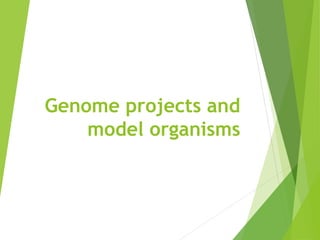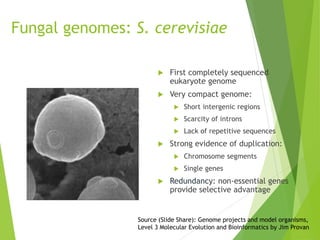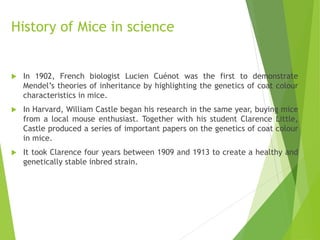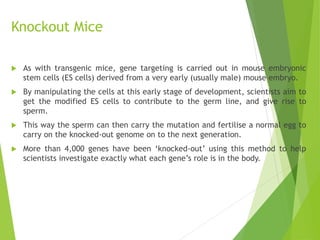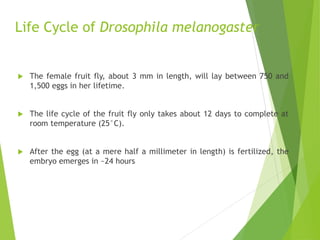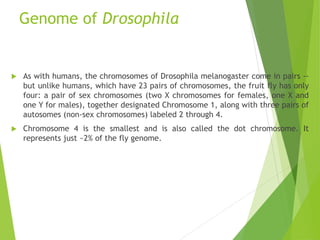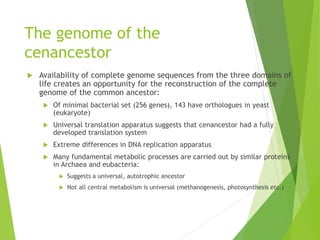Model organisms are non-human species that are widely studied in laboratories to help scientists understand biological processes. They are usually easy to maintain and breed in a lab setting. The document discusses several important model organisms including mice, fruit flies, yeast, and bacteria. It provides details on their genomes, uses for research, and similarities to humans that make them valuable models. Key model organisms like mice and fruit flies have been widely used to study genetics, development, and disease due to their small genomes and short lifecycles.
